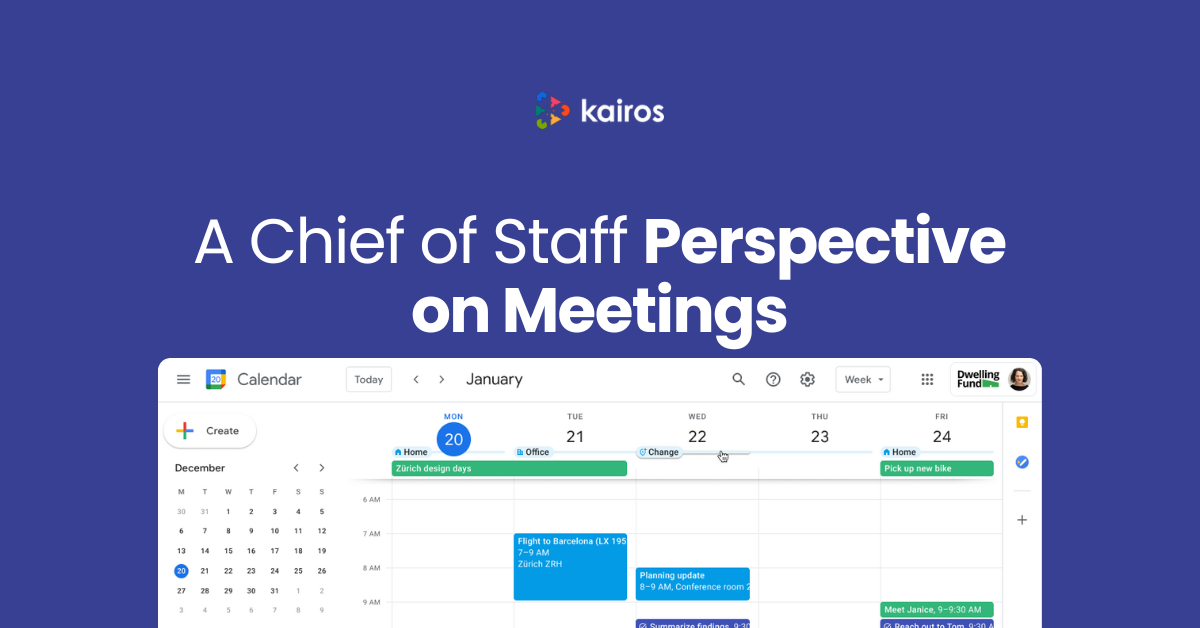Four Steps to Conducting a Meeting Audit
Why Conduct a Meeting Audit?
Meetings are both the scaffolding and wrecking ball of a collaborative process. They’re essential to making magic, but can also be the biggest drain on focus and creativity. Research shows that employees spend up to 40% of their workweek in meetings, and nearly a third of those meetings are unnecessary.
If you’re a leader in the throes of organizational change (3x growth leaders, we see you), conducting a meeting audit is a simple, powerful way to reclaim and refocus your resources.
Step 1: Assess Your Current Meeting Culture
Before making changes, let’s take stock of your organization’s meeting habits. Start by answering the following:
✅ How much time is spent in meetings? Track the percentage of an average workweek devoted to meetings. Are employees left with enough time for deep work?
✅ Who is attending? Are the right people in the room, or are meetings overcrowded with passive listeners?
✅ Are meetings driving decisions? Do meetings land on clear outcomes, or are they mostly used for updates (that could be handled asynchronously)?
✅ What’s the engagement level? Are participants contributing, or is multitasking (and disengagement) the norm?
Step 2: Categorize and Prioritize Your Meetings
Once you've gathered initial insights, categorize your meetings into three buckets:
🚀 High-Impact Meetings: These drive business outcomes, align teams, and lead to actionable next steps. Keep these, but ensure they’re structured effectively.
⚠️ Meetings That Need Refinement: Necessary meetings that require better agendas, clearer roles, or a more streamlined format.
🛑 Meetings That Should Be Emails: If a meeting lacks a purpose or could be replaced with a more efficient communication method (email, Slack, recorded updates), it’s time to cut it.
Step 3: Optimize Your Meeting Structure
📌 Every meeting should answer three key questions before it’s scheduled:
- What’s the objective? Define a clear purpose and desired outcome.
- Who needs to be there? Invite only essential contributors, not passive observers.
- What’s the agenda? Structure discussions with clear topics and time limits.
📌 Make Decisions Faster: Assign a meeting owner and decision-maker to avoid endless discussions without conclusions.
📌 Leverage Asynchronous Work: If a meeting is for information-sharing, consider email updates, Loom videos, or shared documents instead.
Step 4: Implement Change and Track Progress
🔄 Test new meeting norms for 4–6 weeks: Reduce unnecessary meetings, refine agendas, and encourage asynchronous updates.
📊 Measure the impact: Use meeting analytics, employee feedback, and time tracking to assess whether meetings are improving in effectiveness.
🎯 Adjust as needed: Conduct a follow-up audit to ensure long-term change sticks.
Get Expert Guidance with a Kairos Meeting Audit
Leaders often recognize the problem but struggle to make change stick. That’s where Kairos’ Calendar Refresh comes in:
🔍 Data-Driven Insights: We analyze your meeting culture and provide a tailored efficiency report.
🎯 Actionable Fixes: From restructuring calendars to optimizing agendas, we guide you on high-impact changes.
📈 Results You Can See: Less wasted time, improved team engagement, and more productive decision-making.
➡️ Invest in meetings that matter. Let’s build a meeting culture that works for your business. Book a Kairos Meeting Audit today!
.png)

